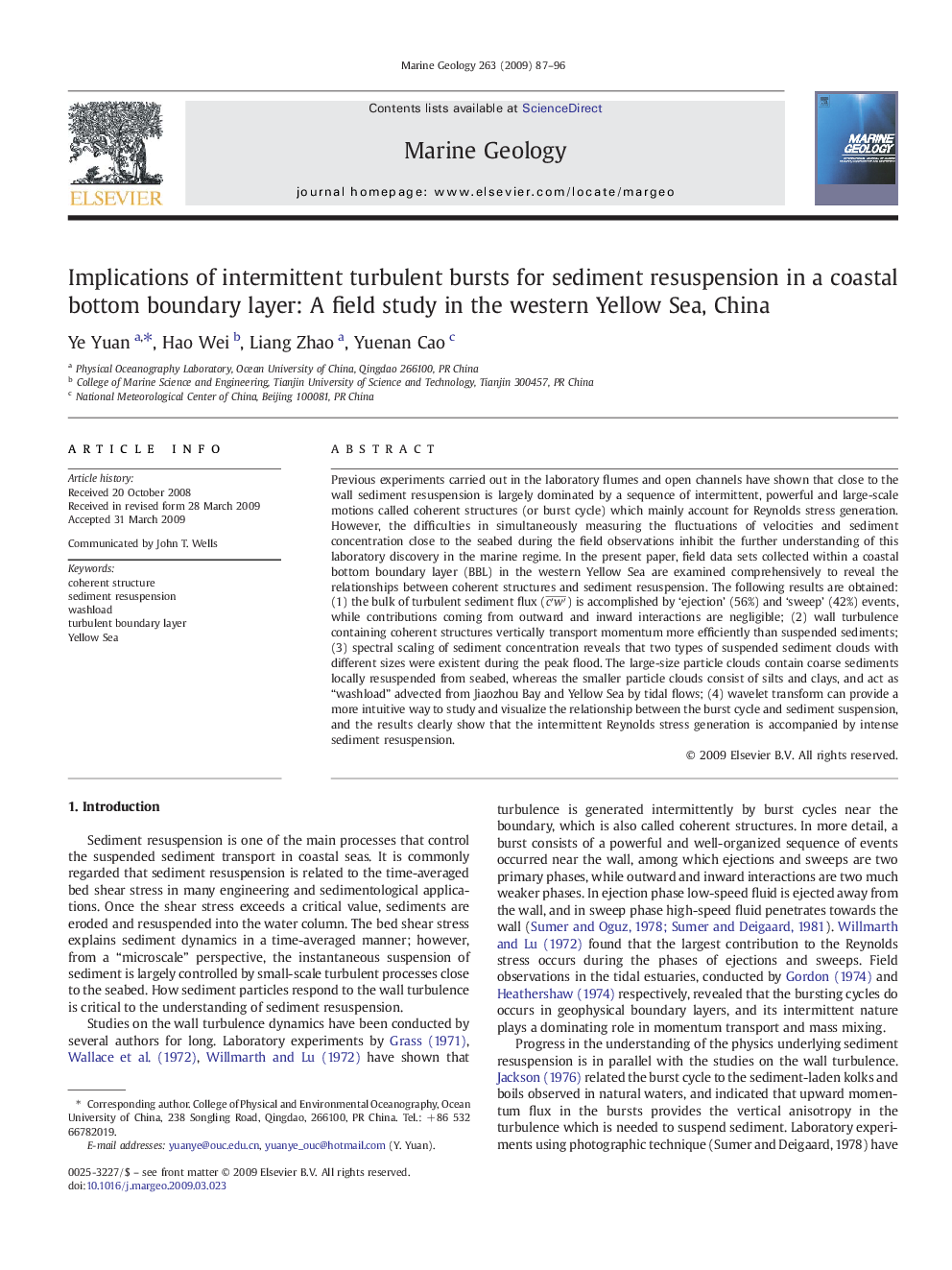| Article ID | Journal | Published Year | Pages | File Type |
|---|---|---|---|---|
| 4719177 | Marine Geology | 2009 | 10 Pages |
Previous experiments carried out in the laboratory flumes and open channels have shown that close to the wall sediment resuspension is largely dominated by a sequence of intermittent, powerful and large-scale motions called coherent structures (or burst cycle) which mainly account for Reynolds stress generation. However, the difficulties in simultaneously measuring the fluctuations of velocities and sediment concentration close to the seabed during the field observations inhibit the further understanding of this laboratory discovery in the marine regime. In the present paper, field data sets collected within a coastal bottom boundary layer (BBL) in the western Yellow Sea are examined comprehensively to reveal the relationships between coherent structures and sediment resuspension. The following results are obtained: (1) the bulk of turbulent sediment flux (c'w'―) is accomplished by ‘ejection’ (56%) and ‘sweep’ (42%) events, while contributions coming from outward and inward interactions are negligible; (2) wall turbulence containing coherent structures vertically transport momentum more efficiently than suspended sediments; (3) spectral scaling of sediment concentration reveals that two types of suspended sediment clouds with different sizes were existent during the peak flood. The large-size particle clouds contain coarse sediments locally resuspended from seabed, whereas the smaller particle clouds consist of silts and clays, and act as “washload” advected from Jiaozhou Bay and Yellow Sea by tidal flows; (4) wavelet transform can provide a more intuitive way to study and visualize the relationship between the burst cycle and sediment suspension, and the results clearly show that the intermittent Reynolds stress generation is accompanied by intense sediment resuspension.
